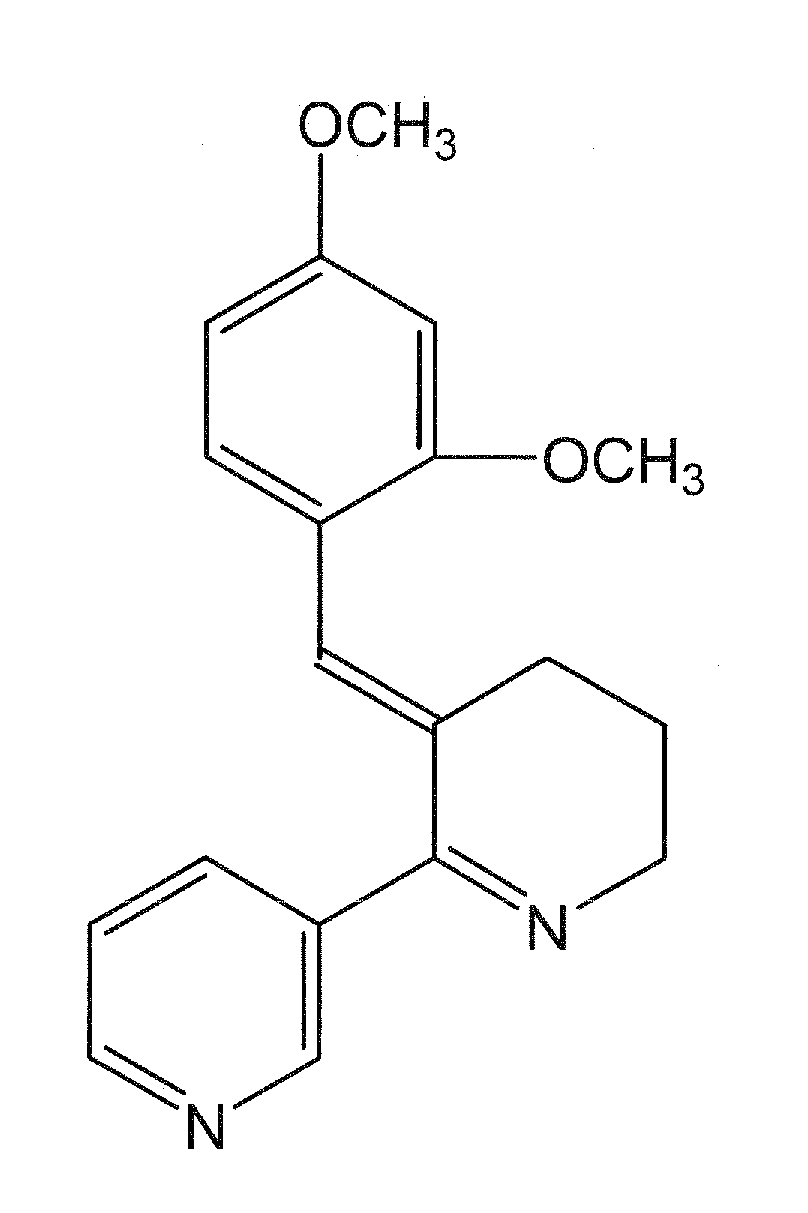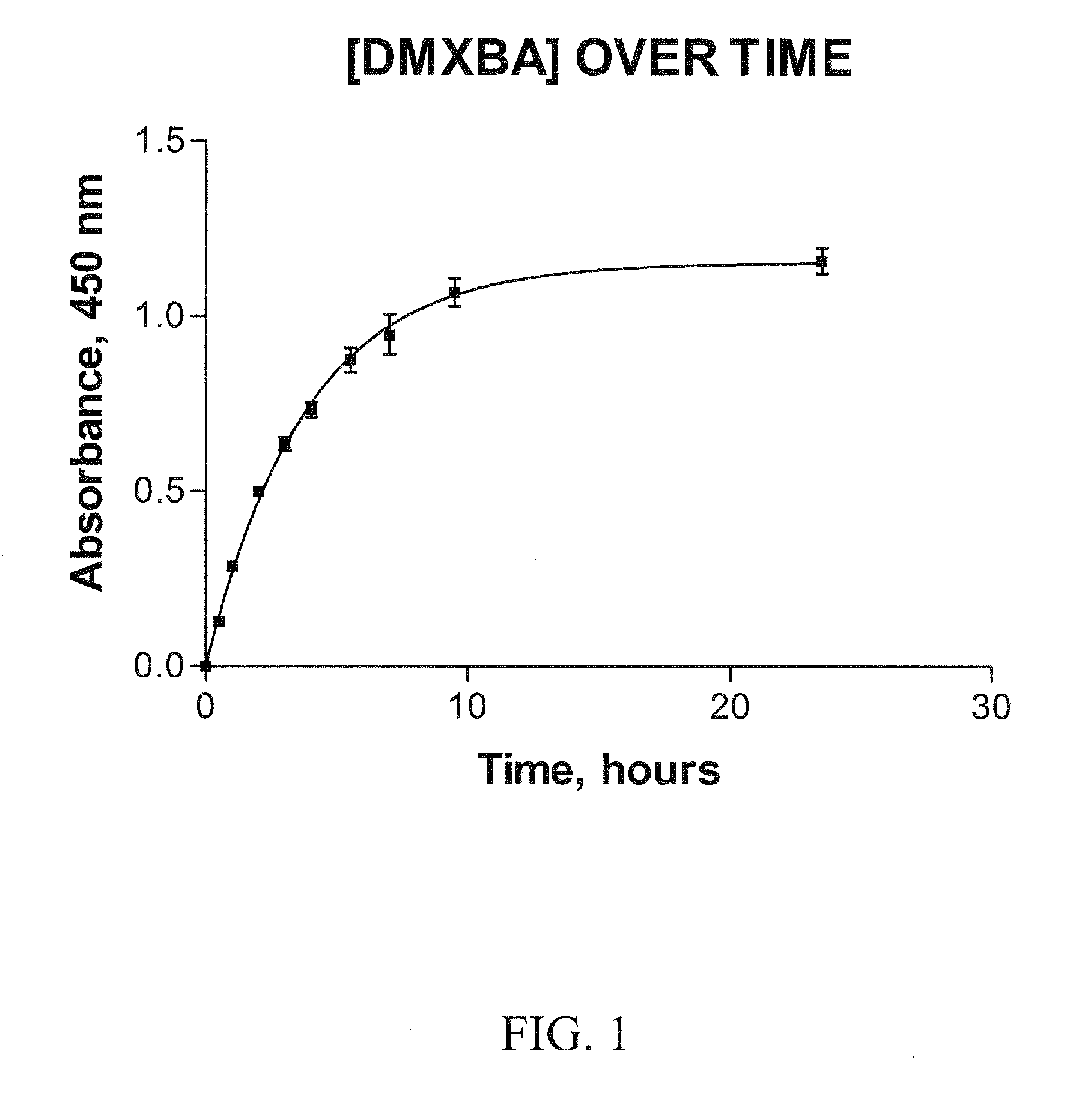Controlled-release formulations of anabaseine compounds and uses thereof
a technology of anabaseine compounds and formulations, which is applied in the direction of biocide, cardiovascular disorders, drug compositions, etc., can solve the problems of schizoid behavior, less practical use in cognitively impaired, non-adherent patient population, etc., and achieve the effect of increasing the thickness of the gel layer
- Summary
- Abstract
- Description
- Claims
- Application Information
AI Technical Summary
Benefits of technology
Problems solved by technology
Method used
Image
Examples
example 1
Preparation of a Controlled-Release Capsule Dosage Form of DMXBA
[0257]Controlled-release (CR) capsules were prepared using 30% K100M METHOCEL (Dow Chemical Co.) to total weight of DMXBA prepared as the dihydrochloride salt. Each capsule contained a dose of 150 mg of DMXBA. Avicel-PH102 (Microcrystalline Cellulose; FMC Corp., Newark, Del.) was used as the filler. At time zero each capsule (suspended in a nylon net) was immersed near the top center of a beaker containing 1.0 liter of simulated gastric fluid (This contained Sigma porcine pepsin 3.2 grams, 0.9% sodium chloride and HCl to obtain pH 1.20) that had been pre-equilibrated at 37±0.5 degrees C. A magnetic stir bar was used to slowly agitate the fluid at 100 rpm. These conditions were recommended in the USP for such tests of controlled-release. At nine different times over an almost 24 hr period a 1.00 ml sample was removed and then replaced by an equal volume of the simulated gastric fluid. These samples were kept frozen (and ...
PUM
| Property | Measurement | Unit |
|---|---|---|
| pressure | aaaaa | aaaaa |
| pressure | aaaaa | aaaaa |
| pH | aaaaa | aaaaa |
Abstract
Description
Claims
Application Information
 Login to View More
Login to View More - R&D
- Intellectual Property
- Life Sciences
- Materials
- Tech Scout
- Unparalleled Data Quality
- Higher Quality Content
- 60% Fewer Hallucinations
Browse by: Latest US Patents, China's latest patents, Technical Efficacy Thesaurus, Application Domain, Technology Topic, Popular Technical Reports.
© 2025 PatSnap. All rights reserved.Legal|Privacy policy|Modern Slavery Act Transparency Statement|Sitemap|About US| Contact US: help@patsnap.com



